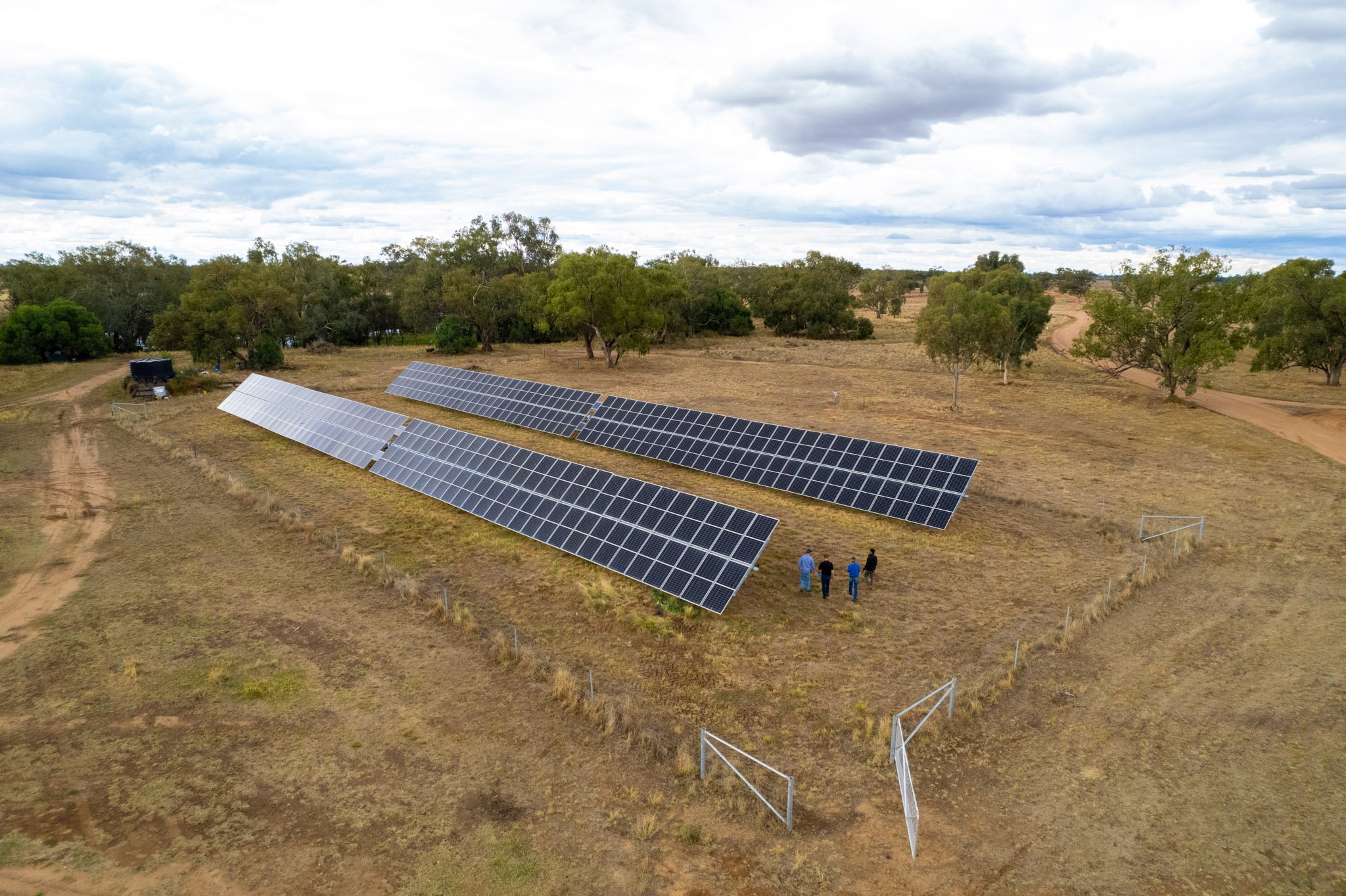Haddon Rig is lucky to be endowed with a wealth of natural assets, including many native species, birdlife, wetlands, waterways and pastures. We are committed to the protection and promotion of our natural capital assets and on reducing the environmental footprint of our operations.
In 2023, we took part in the NSW DPI Energy Efficiency Solutions project, which involved installing a grid connected solar photovoltaic (PV) and battery back-up system to supply electrical equipment and improve the reliability of the electricity supply at our sheep containment feeding yard.
The NSW DPI Energy Efficiency Solutions Project implemented 7 pilot projects across 8 sites to demonstrate innovative technologies and practices to improve on-farm energy efficiency, energy security and productivity while reducing on-farm energy use, costs and emissions.
The pilots were implemented at farms located across NSW in intensive sub-sectors including dairy, horticulture and feedlots. A rigorous evaluation process was undertaken to select proponents to participate in the pilot projects, with NSW DPI contributing 50% of total project costs. This case study summarises findings from the Haddon Rig pilot project.
pilot concept & results
The pilot project entailed installing a 100 kilowatt solar PV and 150 kilowatt hour lithium ion battery system, providing the farm with approximately 70% energy independence from the electricity grid. Bifacial solar PV panels, which generate energy from both sides of the module and produce about 30% more energy than standard panels, are a feature of the project.
The main supply points for the new system are the office, main accommodation block, maintenance shed, woolshed and sheep feedlot. The total project cost was approximately $430,000 and the primary benefits of the new solar PV and battery system include:
Annual electricity bills reduced by about two thirds.
The sheep feedlot is operated by a fully automated, computerised feed out system that is very sensitive to blackouts and brownouts. It is crucial the feed system’s power supply is 100% reliable, and this reliability has been provided by the new energy system.
The shearing shed equipment requires electricity to operate and the new system avoids previous issues such as shearers not being able to work due to blackouts.
On-farm communications and internet access require a continuous supply of electricity to operate so the improved reliability the new system provides has reduced safety risks and increased Haddon Rig’s ability to attract and keep workers.
The Falkiners seek to reduce the impact of their operations on the environment and head towards carbon neutrality so utilising renewable energy is helping them achieve this goal.
The solar PV and battery system can be monitored from anywhere in the world with visibility of what is happening on site, including how much electricity is being produced by the solar system, how the batteries are performing, where electricity loads are being consumed and if there are any faults in the system.
The system is expected pay back within about eight years based on savings from reduced electricity bills, which the Falkiner family consider to be a good investment given the productivity benefits and huge improvement in energy security achieved on the farm. The system monitoring supports decision making around the operations of the farm and the Falkiners are now contemplating expanding the system to cover other loads such as mills or bore pumps.
George Falkiner said the project has given the family a “very good sense of wellbeing” because they can feel secure that, “even if there’s a brownout or blackout, the other system will click in and life will go on.”
Haddon Rig solar array.
Acknowledgments
This work was funded by The Climate Change Research Strategy (CCRS) as part of the Energy Efficiency Solutions project. The CCRS is an initiative of the NSW Department of Primary Industries (DPI), supported by an investment from the NSW Climate Change Fund.
The Energy Efficiency Solutions project is one of seven CCRS projects. More information is available online here: https://www.dpi.nsw.gov.au/dpi/climate/about-dpi-climate/climate-change-research-strategy

